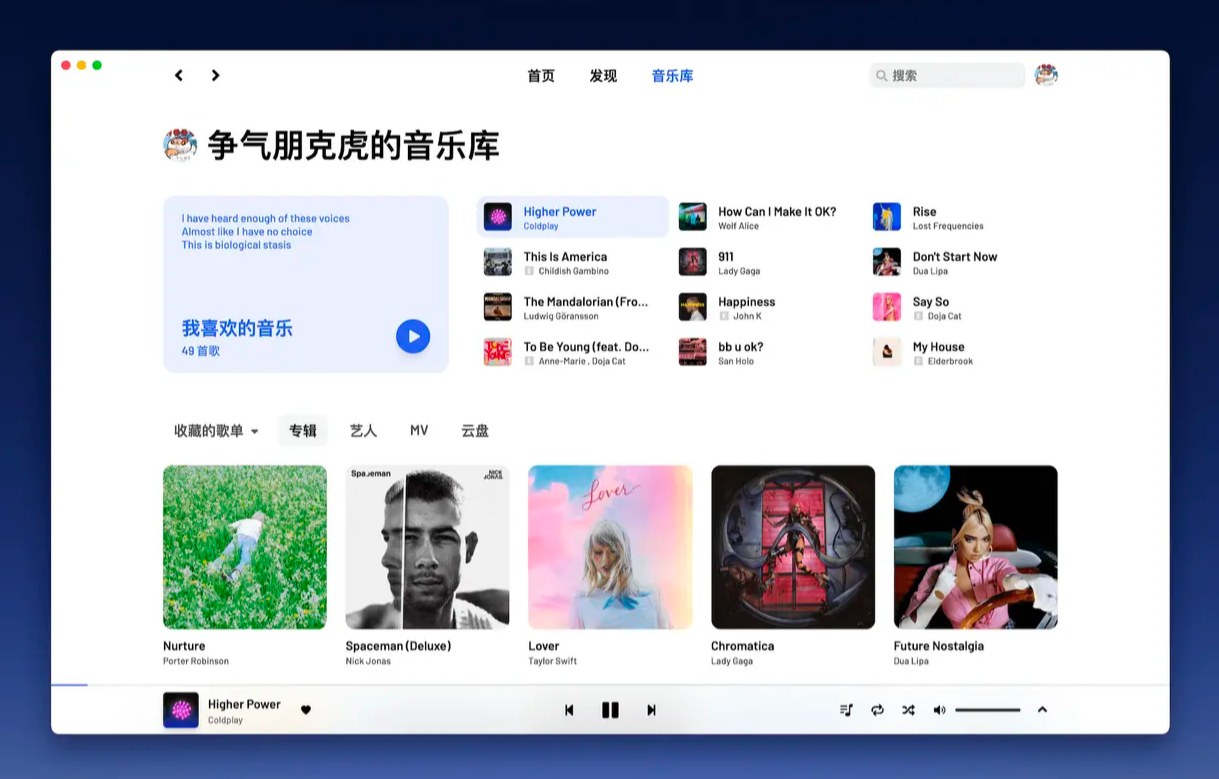The main features of Vue.js: 1. Lightweight, the script is very light and the performance is very fast; 2. Two-way data binding; 3. Instructions, when the value of its expression changes, it will be changed accordingly. Certain behaviors are applied to the DOM; 4. Componentization, extensible HTML elements, and encapsulation of reusable code; 5. Client routing; 6. State management.

Vue.js (pronounced /vju:/, pronounced similar to view) is a progressive framework for building user interfaces. Unlike other heavyweight frameworks, Vue adopts a bottom-up incremental development design.
Vue’s core library only focuses on the view layer, and is very easy to learn and integrate with other libraries or existing projects. Vue is fully capable of powering complex single-page applications developed with single-file components and libraries supported by the Vue ecosystem.
Vue.js also provides MVVM data binding and a composable component system, with a simple and flexible API. Its goal is to achieve responsive data binding and composability through the simplest possible API. view component.
We can also say that Vue.js is a responsive system (Reactivity System). The data model layer (Model) is just an ordinary JavaScript object. As shown in the figure below, { } represents a JavaScript object. Modifying it updates the corresponding HTML fragment (DOM). These HTML fragments are also called "views". This will make state management very simple and intuitive, and can realize two-way binding of data, so we also call it a responsive system.

The main features of Vue.js
Vue.js is an excellent front-end interface for developing JavaScript Library, the reason why it is very popular is that it has many outstanding features, the main features of which are as follows.
1) Lightweight framework
Vue.js can automatically track dependent template expressions and calculated properties, provide MVVM data binding and a composable The component system has a simple and flexible API, making it easier for readers to understand and get started faster.
2) Two-way data binding
Declarative rendering is the main embodiment of two-way data binding and is also the core of Vue.js. It allows the use of concise templates The syntax integrates declarative rendering of data into the DOM.
3) Instructions
Vue.js has many built-in instructions, such as: v-if, v-else, v-show, v-on, v-bind and v-model, these directives are used to perform various operations on the front end.
Vue.js interacts with the page mainly through built-in instructions. The function of the instructions is to apply certain behaviors to the DOM accordingly when the value of its expression changes.
4) Componentization
Component is one of the most powerful features of Vue.js. Components can extend HTML elements, encapsulating reusable code.
In Vue, parent-child components communicate through props, one-way transmission from parent to child. The child component communicates with the parent component and notifies the parent component of data changes by triggering events. This forms a basic father-child communication model.
When the components during development have a very close relationship with HTML, JavaScript, etc., the components can be customized according to actual needs, making development more convenient and greatly reducing the amount of code writing.
The component also supports hot reload. When we make changes, the page will not be refreshed, but the component itself will be reloaded immediately, without affecting the current state of the entire application. CSS also supports hot reloading.
5) Client routing
Vue-router is the official routing plug-in of Vue.js. It is deeply integrated with Vue.js and used to build single-page applications. Vue single-page applications are based on routing and components. Routing is used to set access paths and map paths and components. Traditional pages implement page switching and jumps through hyperlinks.
6) State management
State management is actually a one-way data flow. State drives the rendering of View, and the user operates the View to generate Action, which makes the State Changes occur, causing the View to re-render and form a separate component.
Related recommendations:
2020 front-end vue interview questions summary (with answers)
vue tutorial Recommendation: The latest 5 vue.js video tutorial selections in 2020
For more programming-related knowledge, please visit: Programming Course! !
The above is the detailed content of What are the characteristics of vue.js?. For more information, please follow other related articles on the PHP Chinese website!
 总结分享几个 VueUse 最佳组合,快来收藏使用吧!Jul 20, 2022 pm 08:40 PM
总结分享几个 VueUse 最佳组合,快来收藏使用吧!Jul 20, 2022 pm 08:40 PMVueUse 是 Anthony Fu 的一个开源项目,它为 Vue 开发人员提供了大量适用于 Vue 2 和 Vue 3 的基本 Composition API 实用程序函数。本篇文章就来给大家分享几个我常用的几个 VueUse 最佳组合,希望对大家有所帮助!
 聊聊Vue3+qrcodejs如何生成二维码并添加文字描述Aug 02, 2022 pm 09:19 PM
聊聊Vue3+qrcodejs如何生成二维码并添加文字描述Aug 02, 2022 pm 09:19 PMVue3如何更好地使用qrcodejs生成二维码并添加文字描述?下面本篇文章给大家介绍一下Vue3+qrcodejs生成二维码并添加文字描述,希望对大家有所帮助。
 Github 上 8 个不可错过的 Vue 项目,快来收藏!!Jun 17, 2022 am 10:37 AM
Github 上 8 个不可错过的 Vue 项目,快来收藏!!Jun 17, 2022 am 10:37 AM本篇文章给大家整理分享8个GitHub上很棒的的 Vue 项目,都是非常棒的项目,希望当中有您想要收藏的那一个。
 如何使用VueRouter4.x?快速上手指南Jul 13, 2022 pm 08:11 PM
如何使用VueRouter4.x?快速上手指南Jul 13, 2022 pm 08:11 PM如何使用VueRouter4.x?下面本篇文章就来给大家分享快速上手教程,介绍一下10分钟快速上手VueRouter4.x的方法,希望对大家有所帮助!
 聊聊vue指令中的修饰符,常用事件修饰符总结May 09, 2022 am 11:07 AM
聊聊vue指令中的修饰符,常用事件修饰符总结May 09, 2022 am 11:07 AM本篇文章带大家聊聊vue指令中的修饰符,对比一下vue中的指令修饰符和dom事件中的event对象,介绍一下常用的事件修饰符,希望对大家有所帮助!
 如何覆盖组件库样式?React和Vue项目的解决方法浅析May 16, 2022 am 11:15 AM
如何覆盖组件库样式?React和Vue项目的解决方法浅析May 16, 2022 am 11:15 AM如何覆盖组件库样式?下面本篇文章给大家介绍一下React和Vue项目中优雅地覆盖组件库样式的方法,希望对大家有所帮助!


Hot AI Tools

Undresser.AI Undress
AI-powered app for creating realistic nude photos

AI Clothes Remover
Online AI tool for removing clothes from photos.

Undress AI Tool
Undress images for free

Clothoff.io
AI clothes remover

AI Hentai Generator
Generate AI Hentai for free.

Hot Article

Hot Tools

Dreamweaver CS6
Visual web development tools

DVWA
Damn Vulnerable Web App (DVWA) is a PHP/MySQL web application that is very vulnerable. Its main goals are to be an aid for security professionals to test their skills and tools in a legal environment, to help web developers better understand the process of securing web applications, and to help teachers/students teach/learn in a classroom environment Web application security. The goal of DVWA is to practice some of the most common web vulnerabilities through a simple and straightforward interface, with varying degrees of difficulty. Please note that this software

WebStorm Mac version
Useful JavaScript development tools

Atom editor mac version download
The most popular open source editor

MinGW - Minimalist GNU for Windows
This project is in the process of being migrated to osdn.net/projects/mingw, you can continue to follow us there. MinGW: A native Windows port of the GNU Compiler Collection (GCC), freely distributable import libraries and header files for building native Windows applications; includes extensions to the MSVC runtime to support C99 functionality. All MinGW software can run on 64-bit Windows platforms.








